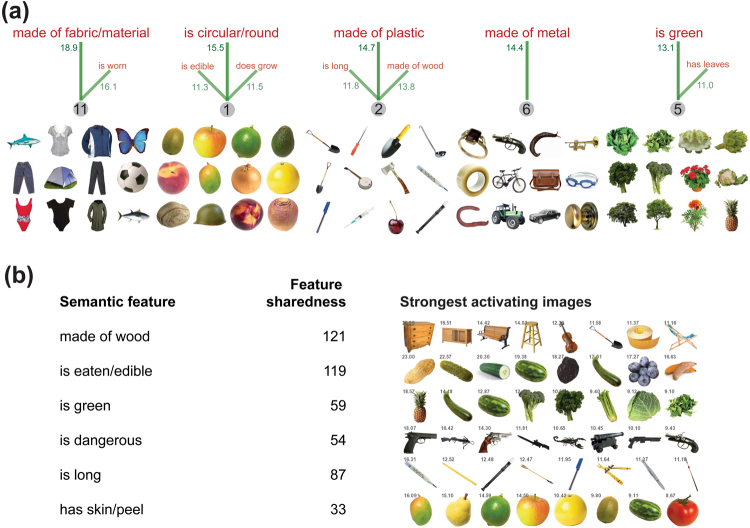Figure 3.
(a) Relationship between high-level visual information and semantic features in the attractor network model. The five semantic feature units with the highest learned connection weights to visual nodes are made of fabric/cloth/material, is circular/round, made of plastic, made of metal, and is green. For each semantic feature, the visual node (grey circle) with the strongest connection weight (green text) is shown. For each visual node, we display 12 of the 16 images with the highest values for that node. Also shown for each node are other semantic features with connection weights > 10. Different visual nodes reflect different high-level visual regularities in images which are mapped on to semantic features in meaningful ways (roundness, greenness, thinness, etc). (b) Semantic features which are most strongly activated by object images. For each semantic feature unit in the attractor model, we find the maximum input activation to that feature node from all visual input images. Six semantic features with high maximal input are shown, and the first image in each row is the features’ maximally activating image. The seven next most strongly activating images for each feature are also shown, as is the sharedness of each feature (i.e. the number of concepts the feature occurs in). Object images reprinted with permission from Hemera Photo Objects.

